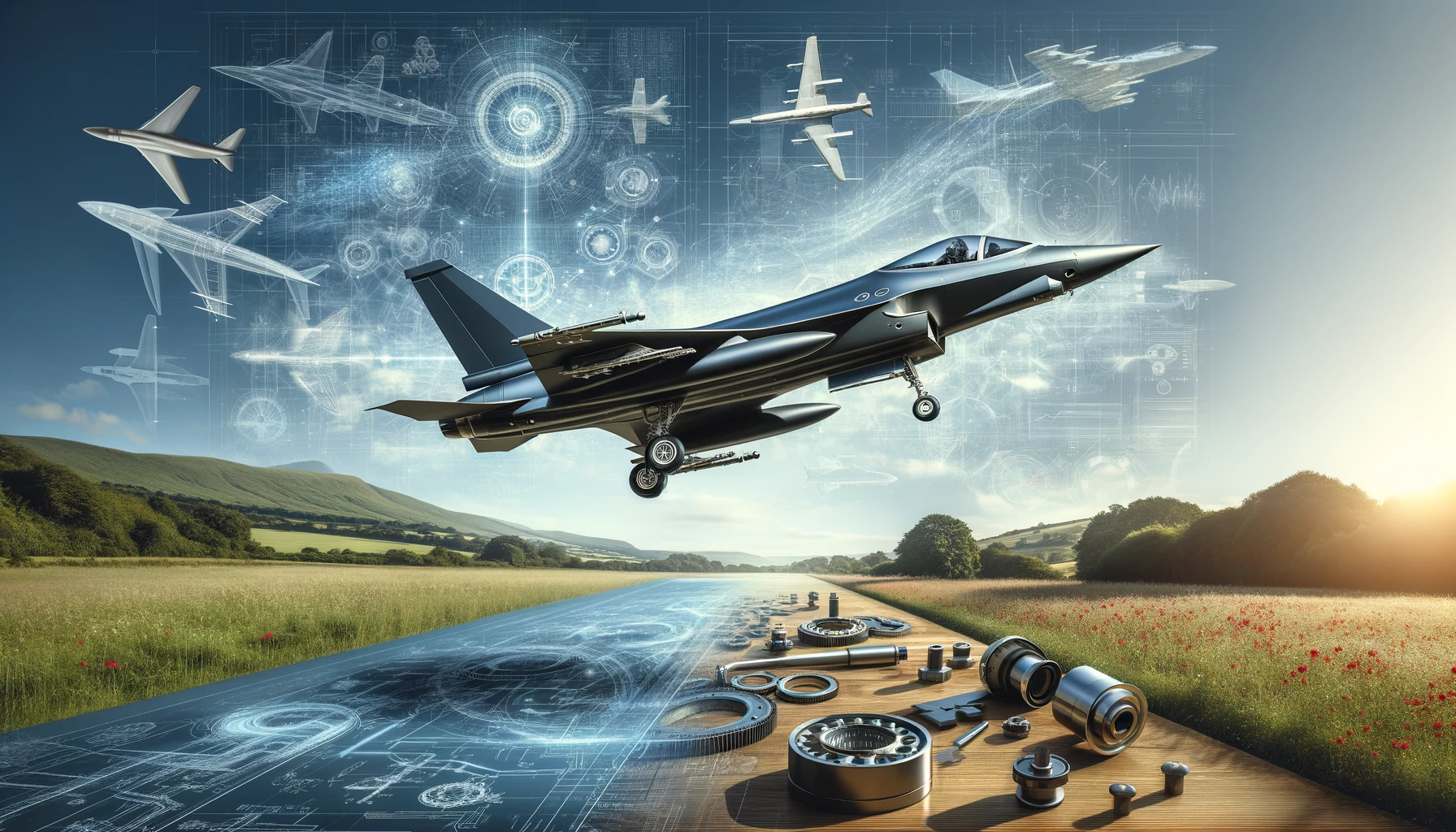The designation 18001 Vought represents a landmark in the history of aerospace engineering, encapsulating the innovation and dedication that defined the Vought Aircraft Company. Established in the early 20th century, Vought quickly became synonymous with pioneering military and civilian aircraft. From designing advanced fighter jets to influencing modern aviation technology, Vought’s legacy extends beyond its famous models like the F4U Corsair. This article explores the historical and technical significance of Vought’s contributions, highlighting how 18001 Vought remains a symbol of excellence and enduring influence in the field of aerospace.
What Is 18001Vought?
18001 Vought could refer to a particular model, specification, or designation associated with the Vought Aircraft Company, known for its historic contributions to military and civil aviation. Vought Aircraft, founded in 1917 by Chance M. Vought, became a leading developer of innovative aircraft, particularly for the U.S. Navy and Marine Corps.
Their notable aircraft include the F4U Corsair, a World War II fighter plane recognized for its speed and agility, and other advanced designs like the A-7 Corsair II.
The term “18001” may denote a specific design code, serial number, or a classified project, possibly related to one of Vought’s experimental or prototype aircraft. It could also reference a facility, blueprint, or technology developed by Vought, aligning with their ongoing legacy in pioneering aerospace engineering. Further details about 18001 Vought may be available in specialized aviation archives or records from Vought’s collaborations with government and defense agencies.
Why Is 18001Vought Important?
The significance of 18001 Vought likely ties back to the Vought Aircraft Company’s historical impact on aerospace technology and defense capabilities. Vought was a key player in developing innovative and highly effective military aircraft, such as the F4U Corsair and the A-7 Corsair II, which shaped aerial combat strategies and defense tactics from World War II through the Cold War. If 18001 Vought relates to a particular aircraft or project, its importance might stem from the technological advancements it introduced, like improved aerodynamics, powerful engines, or weapons integration that set new standards in aviation.
The contributions of Vought to military aviation extended beyond mere aircraft production—they involved pioneering efforts in design, materials, and engineering approaches that influenced modern aerospace. Each development from Vought helped set the stage for more sophisticated aircraft and advanced technology in later decades. Therefore, “18001 Vought” represents not only a specific asset or achievement in aviation history but also serves as a marker of Vought’s lasting legacy in pushing aerospace boundaries and bolstering defense capabilities.
Historical Background of Vought Aircraft
Founded in 1917 by Chance M. Vought, the Vought Aircraft Company quickly became a leader in military aviation, especially for the U.S. Navy and Marine Corps. Its early planes, like the VE-7, were among the first to operate from aircraft carriers. During World War II, Vought introduced the F4U Corsair, an iconic fighter known for its speed and effectiveness, which continued serving through the Korean War. In the Cold War era, Vought produced the A-7 Corsair II, a precision attack aircraft widely used in Vietnam. Vought’s innovations in aircraft and missile technology solidified its impact on aerospace development.
How to Use 18001Vought in the Aviation Industry
Using 18001 Vought in the aviation industry would involve applying the design principles, technologies, or specific innovations associated with Vought’s legacy to modern aerospace projects. Here’s how these elements could be leveraged:
- Design and Engineering Inspiration: Vought’s iconic aircraft like the F4U Corsair exemplified durable yet agile design. Applying Vought’s approach to modern fighter jets and unmanned systems can inspire aerodynamic efficiency and advanced maneuverability, both critical in current military aviation.
- Innovation in Carrier-Based Aircraft: Vought excelled in creating carrier-capable aircraft, a skill that remains crucial for modern naval aviation. Understanding Vought’s carrier-specific adaptations could benefit current naval aircraft designers by optimizing aircraft for durability and ease of launch and recovery at sea.
- Focus on Precision and Reliability: Aircraft such as the A-7 Corsair II emphasized precision targeting and reliability, qualities essential for present-day combat and reconnaissance missions. Integrating Vought’s approach to durability and mission accuracy can improve the development of multi-role aircraft and drones.
- Historical and Brand Legacy: Leveraging the “18001 Vought” name or legacy could also serve as a branding tool, honoring aerospace heritage while emphasizing quality and innovation.
Technical Specifications and Innovations
Vought Aircraft Company was known for introducing several technical advancements and engineering innovations in military aviation. Here are some highlights:
F4U Corsair
- Engine: Powered by a Pratt & Whitney R-2800 Double Wasp engine, providing over 2,000 horsepower.
- Speed: Reached speeds up to 446 mph, making it one of the fastest fighter aircraft of its time.
- Innovations: Featured inverted gull wings to accommodate larger propellers and improve aerodynamics, enhancing lift and agility, especially for carrier-based operations.
A-7 Corsair II
- Engine: Equipped with an Allison TF41-A-2 turbofan engine, providing approximately 14,500 pounds of thrust.
- Avionics: Integrated advanced targeting systems, including the first modern heads-up display (HUD) and an inertial navigation system, allowing for precision attacks.
- Innovations: Introduced groundbreaking accuracy in strike capabilities, which helped shape modern ground-attack and close air support operations.
Missile and Aerospace Technologies
- Guidance Systems: Vought developed precision guidance systems for missiles, contributing to advancements in targeting accuracy.
- Legacy in Carrier-Based Design: Vought’s consistent focus on carrier-friendly aircraft, with robust landing gear and optimized airframes for naval use, has influenced the development of later multi-role and carrier-capable aircraft.
Impact of 8001 Vought on Future Aerospace Innovations
The legacy of 8001 Vought continues to shape modern aerospace technology:
Carrier-Capable Design Principles
Vought’s expertise in creating durable, agile carrier-based aircraft has informed today’s naval aviation designs. Modern unmanned aerial vehicles (UAVs) and next-generation fighter jets benefit from Vought’s focus on robustness and adaptability for launch and recovery on aircraft carriers.
Precision and Avionics
With innovations like the heads-up display (HUD) introduced in the A-7 Corsair II, Vought set a new benchmark for precision in targeting and navigation systems. Future aerospace technologies, especially those involving autonomous drones and advanced weaponry, build upon these foundational avionics for enhanced accuracy and mission efficiency.
Influence on Aerodynamics and Materials
Vought’s emphasis on aerodynamics and structural durability helped shape current approaches to lightweight, high-strength materials and streamlined design. This legacy supports advances in sustainable aviation and hypersonic travel, where efficiency and resilience are critical.
FAQs
What does 18001Vought refer to specifically?
“18001 Vought” likely refers to a specific model, designation, or project associated with Vought Aircraft’s legacy in military aviation.
Why is part identification like 18001Vought important in aviation?
Part identification like “18001 Vought” is crucial in aviation for tracking, maintaining, and verifying components, ensuring safety, compliance with regulations, and efficient maintenance of aircraft systems. This precise identification helps streamline repairs, supports quality control, and allows for accurate historical documentation of parts in aviation engineering.
Can 18001Vought be used for parts outside of the aerospace industry?
Yes, parts like “18001 Vought” can be used outside aerospace if they meet other industry specifications. Their high durability, precision, and reliability make them suitable for automotive, defense, and specialized manufacturing, though compatibility and regulatory standards must be considered.
Is 18001Vought still relevant today?
Yes, “18001 Vought” remains relevant today as its engineering principles, such as durability and precision in design, continue to influence modern aerospace and defense technologies. Its legacy in reliable, high-performance parts still serves as a benchmark for innovation and quality in various engineering fields.
What legacy did the 18001Vought leave in the aviation industry?
The legacy of “18001 Vought” in the aviation industry includes pioneering advancements in durable, carrier-capable aircraft design, precision avionics, and aerodynamic efficiency. Vought’s innovations set new standards for reliability and performance, influencing the development of modern military and commercial aircraft. This legacy has established Vought as a benchmark in aviation engineering, inspiring continued advancements in aircraft technology and design principles.
Conclusion
In summary, “18001 Vought” represents a pivotal chapter in aviation history, characterized by innovative designs and engineering excellence. The legacy of Vought Aircraft continues to resonate through its contributions to military and civilian aviation, fostering advancements that prioritize safety, performance, and efficiency. As the aerospace industry moves forward, the principles and standards set by Vought will remain essential in shaping the future of flight.



